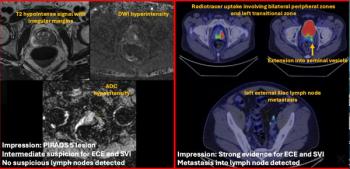
Portable MRI System Gets FDA Nod for AI-Powered Brain Imaging Software
The upgraded, artificial intelligence (AI)-enabled software for the Swoop® Portable MR Imaging System reportedly enhances the device’s signal-to-noise ratio for diffusion-weighted imaging (DWI) sequences.
The Food and Drug Administration (FDA) has granted 510(k) clearance for upgraded brain imaging software utilized with the Swoop® Portable MR Imaging System (Hyperfine).
The software includes an increased signal-to-noise ratio for diffusion-weighted magnetic resonance imaging (MRI) sequences as well as 10 percent increases in the fields of view for T1, T2 and FLAIR sequences that facilitate enhanced imaging of pathology deep in the brain, according to Hyperfine.
“The
Hyperfine noted this is the 11th FDA clearance for the Swoop Portable MR Imaging System following the initial FDA clearance for the device in 2020 and nine subsequent clearances for hardware and software improvements.
In a related study, researchers,
“We believe these observations set the stage for using portable MRI in the dynamic environment of acute stroke intervention where patients are at high risk for ongoing injury,” noted study co-author Kevin Sheth, M.D., a professor of neurology and neurosurgery at the Yale School of Medicine.
(Editor’s note: For related articles, see “
Newsletter
Stay at the forefront of radiology with the Diagnostic Imaging newsletter, delivering the latest news, clinical insights, and imaging advancements for today’s radiologists.




























